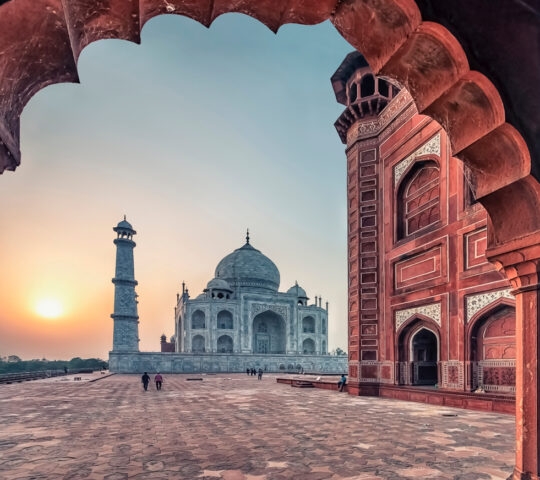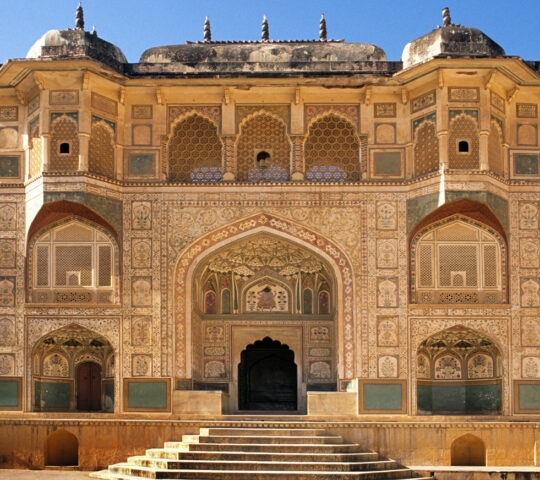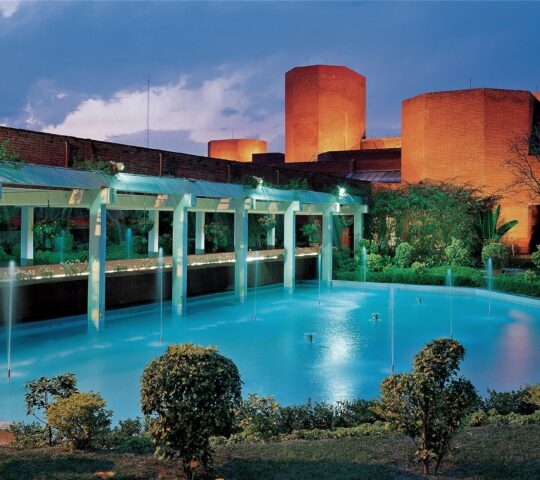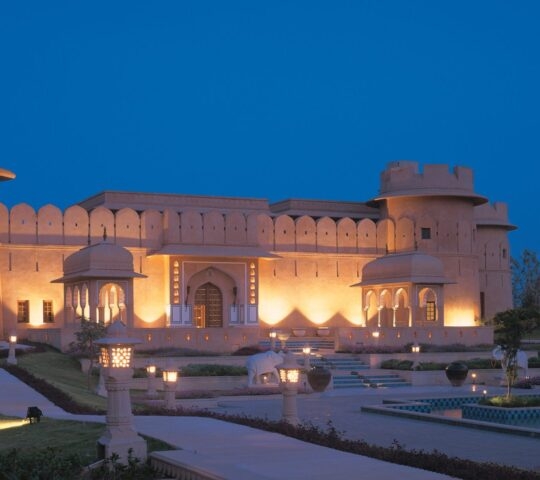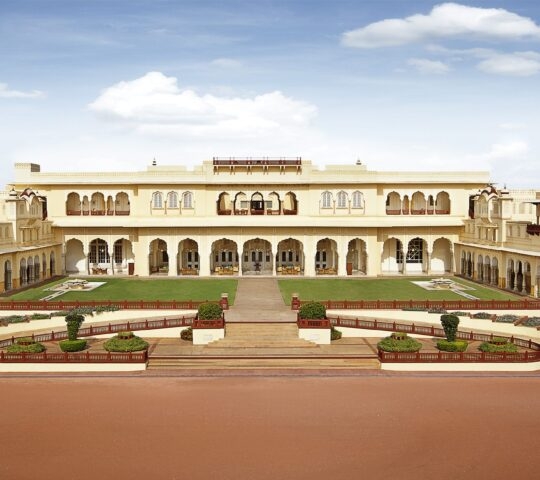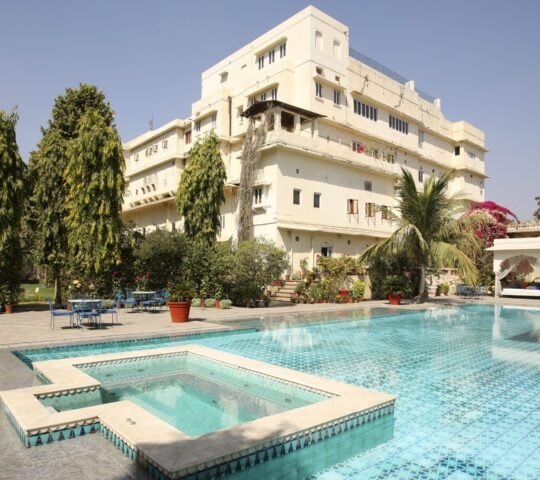Classic India
On this wholesome cultural journey you’ll not only see all the highlights of India with a private guide, who will accompany you for the duration of your adventure, but also get a unique insight into life here. You'll meet warm and welcoming locals every step of the way and enjoy exclusive experiences in Delhi, Varanasi, Agra, Jaipur and Udaipur on your luxury tour of India.
Trip highlights
- Explore Delhi's jumbled old town as well as New Delhi
- Witness ancient ceremonies on the ghats of the Ganges
- See the iconic Taj Mahal at sunrise and sunset
- Discover Jaipur's Amber Fort and visit the bazaar
- Make a stop at the deserted Mughal city of Fatehpur Sikri
- Browse a food and spice market in Udaipur
Bespoke trips with Jacada
We design one-of-a-kind journeys incorporating luxury in all its forms. Our bespoke trips include:
- Luxury accommodation throughout
- Privately guided tours
- Private transfers
- Meticulously selected experiences
- Expertise and support from your Jacada Concierge

Itinerary in detail
Every Jacada trip is tailored to your personal preferences and interests. Below you’ll find a sample itinerary to inspire your own custom-designed journey.
Days 1–3
Getting to know Delhi
With a population of more than 18 million, Delhi is an international metropolis. Perhaps daunting at first sight, a little exploring soon reveals a diverse and fascinating culture. Throughout most of its history, it has served as the capital of various kingdoms and empires, captured and rebuilt time and again. If weaving your way in and out of the rickshaws and cyclists ever starts to get too much, turn the corner and you’ll find a tranquil garden or a quiet enclave in which to stop and recharge.

Where you could stay
Make it mine
Back in time
Grand design
Impressive architecture
Delhi's fashion scene

Old Delhi tour
In complete contrast to the new city, the old city is a labyrinthine maze of lanes overhung by a tangled mass of electric wires. Within this chaos lies a semblance of order – each lane in this area is dedicated to a particular item, rather like a department store. There are lanes selling bangles, grocers, items used in weddings, silverware, clothes, spices and shoes. Sharing the same space are vendors with carts selling a variety of items, street side dentists, natural healers and cobblers. The old city has space for all professions. You’ll explore in cycle rickshaws and walk along some of the more interesting alleys.

New Delhi tour
Explore New Delhi, an area within Delhi built as the seat of the British Indian government in the early twentieth century. Much of the design was by architect Edwins Lutyens, and thus it is referred to as Lutyens’ Delhi, who invented his own order of classical architecture. There are grand buildings, such as Rashtrapati Bhavan (formerly known as Viceroy’s House), as well as the Lutyens Bungalow Zone, a green area of residential buildings that has the most expensive real estate in India and possibly the world. You’ll also see Humayun’s Tomb, built in 1570 as the first garden-tomb on the Indian subcontinent.

Qutb Minar and Humanyun's Tomb
The immense Qutb Minar at 72.5m (238 feet) in height is the tallest brick minaret in the world. The intricate tower was built in 1199AD to commemorate victory over the Rajput king, marking beginning of Muslim rule in India. Qutb Minar and the complex around it form the Qutb Complex, a UNESCO World Heritage Site. Other structures in the complex include the Alai Gate, the Alai Minar, the Iron Pillar and the ruins of several earlier Jain temples.
Humayun’s Tomb, commissioned in 1569 by the Mugal Emperor’s son Akbar as the first garden-tomb on the Indian subcontinent, started a fashion that would culminate in the Taj Mahal.

Fashion scene of Delhi
Dive into the fashion scene of Delhi by visiting the stores of established designers such as Sabyasachi Mukherjee and Anita Dongre before heading to Shahpur Jat and Hauz Khas Village to discover emerging talents like Nikhil Thampi and Doodlage. This journey offers a well-rounded glimpse into the dynamic local fashion scene, with the chance to meet a few of the designers.
Days 3–5
Exploring India's spiritual capital
An ancient settlement on the banks of the Ganges, Varanasi is India’s spiritual capital and important among numerous faiths. Its 84 ghats – stone embankments that step down into the river – are its most famous sight. Most are crowded with pilgrims performing ritual ablutions in the river waters while a few are used solely for cremation. Sublime and sometimes shocking to visitors, the whole experience is utterly unforgettable.

Where you could stay
See more
Ceremony of light
On water and foot
Sacred site

Evening aarti prayer ceremony
In the evening, you will be taken for a boat ride on the River Ganges and experience the evening aarti prayer, one of the most important and popular ceremonies of the Hindu faith. Sometimes called the ‘ceremony of light’, it involves waving lighted wicks before the sacred images to infuse the flames with the deities’ love, energy and blessings. You will also float your own lamps down the river.

Ganges boat ride and old city walking tour
On this morning excursion, you will be taken for a boat ride on the River Ganges. After the boat ride you will meet a local expert on the ghats who will lead you on a private walking tour in the old city. On this walk you will see the back alleys, old havelis, temples, labyrinth of streets, street vendors and pilgrims that line the banks of the Ganges.

Tour of Sarnath
Head out of Varanasi to visit the sacred site of Sarnath. It is here that Buddha is believed to have set in motion what Buddhists call the Wheel of Dharma by delivering his first sermon to the five companions with whom he had sought enlightenment. Together with him, they formed the first sangha, or company of Buddhist monks. You’ll explore the ancient stupas and make a visit to the small but excellent museum at the site.
Days 5–6
One night in Agra
It has graced the pages of books for centuries but nothing quite prepares you for seeing the Taj Mahal for the very fist time. The ultimate symbol of eternal love, this is one of India’s most memorable and emotive sights. The Taj Mahal sits on the banks of the holy Yamuna River within 42 acres of beautiful gardens. The domed mausoleum sits 52m above the river bank, surrounded by minarets on all four sides. It is flanked by a mosque and a guest house, both made from red sandstone and mirror images of each other. It’s well worth lingering to explore the city’s magnificent fort that lies just 3km to the west.

Where you could stay
Make it mine
Sunrise and sunset
Architectural artistry
Deserted city

Visit the Taj Mahal
Visiting the Taj Mahal at sunrise or sunset is a truly magical experience, as the light plays on the marble of the tomb and its reflection shimmers in the water.
Heartbroken after the death of his favourite wife, Mumtaz Mahal, during the birth of their 14th child, Shah Jahan set about building the world’s most beautiful monument in her honour.

Tour Agra Fort
Just a few kilometres from the Taj Mahal sits the impressive Agra Fort, where the Mughal Emperor Shah Jehan was imprisoned by his son. Here you will see the art and crafting of the white marble that has made the area so famous, the Pearl Mosque and the Halls of Public and Private Audience.

Stop at Fatehpur Sikri
En route to Jaipur, you may like to visit the deserted Mughal city of Fatehpur Sikri which was built by Emperor Akbar in 1569 and abandoned after just 15 years due to scarcity of water. See the graceful buildings including the Jama Masjid, the Tomb of Salim Chishti, the Panch Mahal and other palaces.
Days 6–9
Take some time in Jaipur
The capital of Rajasthan and its largest city, Jaipur is at once the state’s commercial hub and one of its most fascinating cultural destinations. The pace of life here is fast, but take your time and in this somewhat frantic city you’ll find some of India’s most majestic palaces and atmospheric relics.

Where you could stay
Jaipur's City Palace

While in Jaipur, visit the sprawling City Palace, which is painted pink in keeping with the color theme of the old city. The impressive facade and interiors are a blend of predominately Rajput and Mughal styles of architecture. Within the palace complex are several museums including a textile gallery exhibiting a fine selection of textiles and costumes from the royal collection. You’ll also enjoy a tour also of the ceremonial rooms and private quarters which are usually off-limits to the public.
See more
Look to the stars
Market maze
Recall the past

Visit the Jantar Mantar
Maharaja Jai Singh II, the founder of the pink city, was an avid astrologer and built five observatories around northern India. The Jantar Mantar is the largest of the five and houses what is believed to be the world’s largest sun dial. The observatory consists of 14 geometric devices for measuring time, tracking constellations and observing the orbits around the sun.

Wander the bazaars of Jaipur's old city
Explore the Badi Chaupad and Johari bazaars in Jaipur’s old city. Wandering through the maze of stalls and studios, you’ll see craftspeople working on all sorts of forms of local art including zardozi embroidery, gota work, kinary, silver ornament work and precious and semi-precious stonework.

Tour Amber Fort
Amber, the ancient capital of the region, still recalls its heydays in the majestic ramparts rising steeply along the contoured hillsides. It is an extremely well preserved building and during your guided tour you’ll visit the Jagmandir, or Hall of Victory, with its glittering mirrors, the Jai Mahal and Temple of Kali.
You can also visit the Anokhi Museum of Hand Printing, a gem of a museum tucked away among the cobbled streets of Amber. Here you can see the incredible work that goes into traditional block printing on cotton and silk.
Days 9–11
Explore the arty streets of Udaipur
The scenic city of Udaipur sits surrounded on all sides by the wooded Aravalli Hills, its grand palaces reflected in serene lakes. The old city is a bustling jumble of alleys and side streets, but tranquility is never far away, be it boating on one of the lakes or a panoramic view from the hilltop Monsoon Temple. For shoppers, Udaipur’s ancient bazaars and vibrant arts scene make it a great place to find intricate Mughal-inspired miniature paintings, marble and silver craft.
A guided walk through the old city is a great place to start. With your guide, you’ll wind your way through lanes that teem with cows, elephants and people. You’ll pass shops, folk art hung on the walls of houses and pretty latticed haveli windows.

Where you could stay
Make it mine
Get cooking
Exquisite workmanship
Artistic pursuits

Market tour and home cooking class
Visit the local market to learn about vegetables and spices. Then your host will take you on a culinary journey, teaching you about Indian spices and how to use them. This will be hands on session and at the end, you’ll enjoy your creations for lunch.

Tour Udaipur's City Palace
The City Palace, sat on the banks of Lake Pichola, is one of the architectural wonders of Rajasthan, its detailed art and workmanship a tribute to the skills of local craftspeople. The royal family claim to be ‘surya vansh’, descendants of the sun, and so the whole structure faces east and there is a stunning bejewelled image of the sun at the entrance.

Jal Sanjhvi water painting
Jal Sanjhvi is the art of drawing on water, a popular ritual performed at temples dedicated to Krishna where coloured powders are used to draw iconic images onto water. A full canvas takes about five hours to create, and you’ll arrive in time to see the picture completed.
In a word - amazing. ALL of the recommendations - from the hotels, to the tours and sights, and most especially to the fantastic guides, drivers and handlers who made it all so seamless and engaging on the ground in India- made this a truly memorable experience. And of course a special thank you to Rachel O'Leary and Gilda Tang…
Why book with Jacada

Personalised design
We’ll plan your trip around your personal interests, tastes and preferences, providing honest advice based on first-hand knowledge.

Authentic experiences
Our expert guides and brilliant Concierges are hand-picked for their ability to bring your destination to life with care and passion.

Positive Impact
We seek out unforgettable experiences that benefit both local communities and the environment.







